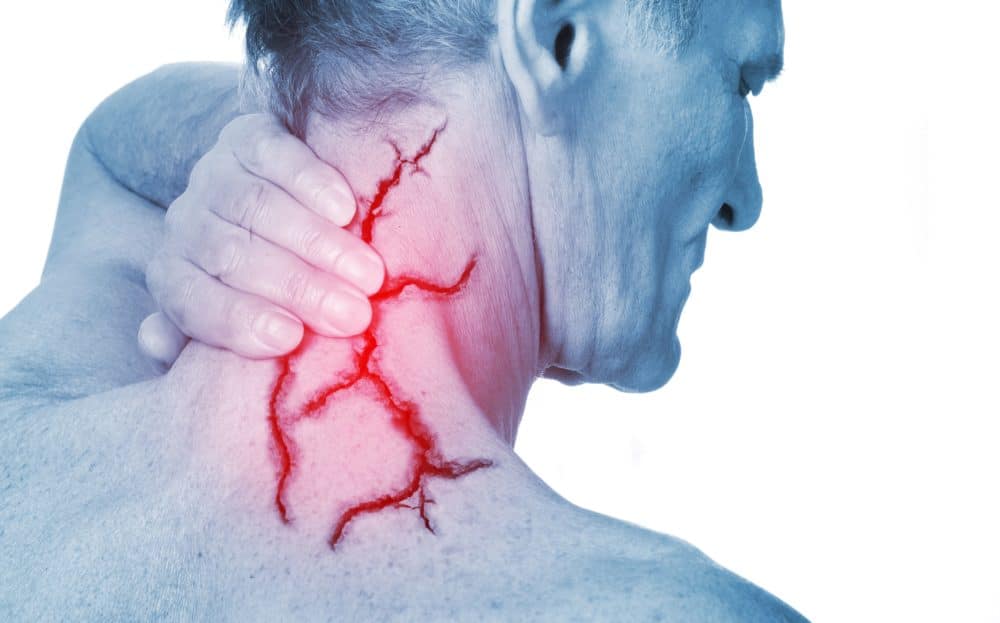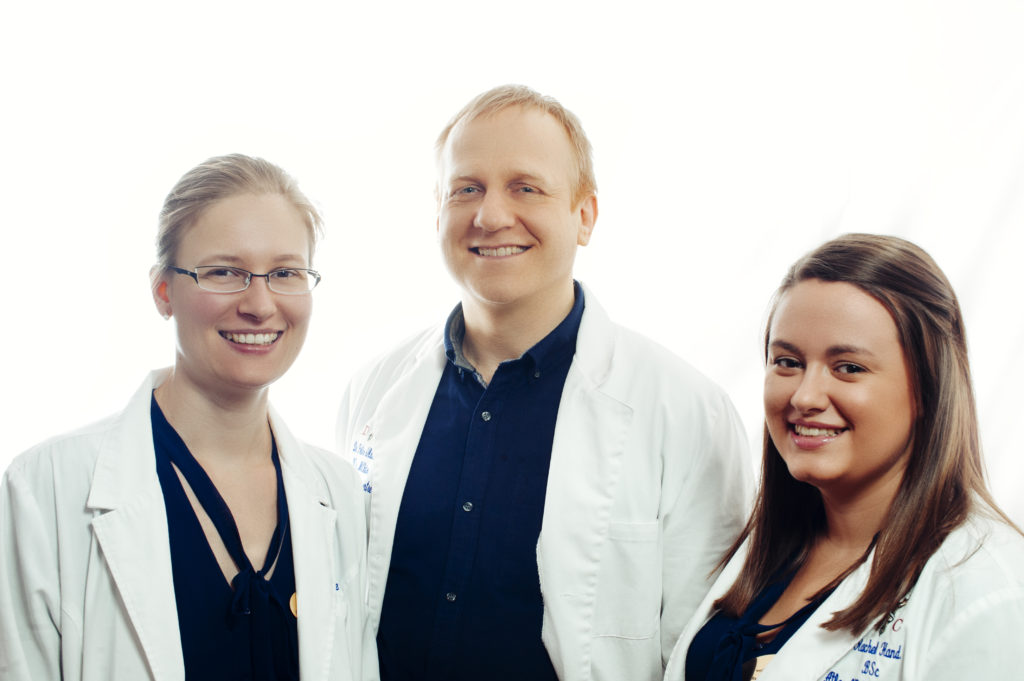Get Your Neck Pain Treated Sooner & Save 77% Off Your Consultation
An Effective Natural Therapy for Neck Pain
Neck pain is one of the most common reasons to visit a doctor in the UK, along with low back pain.
It is also one of the most common reasons to visit a manual therapist – though far fewer people think of doing that as the first port of call.
Many neck pain problems are related to spinal issues, which have a long and successful track record of being alleviated by manual therapy spinal specialist.
A large body of research going back decades supports the anecdotal stories from patients with neck pain.
We take a look at some of that below.

Leave your name and number in the form below or Call Us Now On 01234 340 317
The big problem with neck pain
If you’re suffering from neck or back pain, you’re like millions of others around the UK.
It’s a common condition that three-quarters of the population will experience at some point in their lives.
Neck pain can severely interrupt work, social, sporting and other activities.
The good news is that, in around 90 percent of cases, the pain dissipates within a few days, regardless of the treatment you have. You can then resume your daily business as normal.
The real problems occur when the pain persists and turns into a chronic condition that lasts months and may return.
This is complicated by the fact that, in the majority of cases, no underlying cause of the disease can be established. Unless it’s something quite obvious like whiplash after a car accident, the reasons for the neck pain often remain unknown.
This is usually called non-specific pain and it is challenging to treat. Most of the time, people turn to over-the-counter painkillers like paracetamol, NSAIDs, and analgesics.
If the pain intensifies and persists, a trip to the doctor usually leads to more prescription medications and perhaps physiotherapy.
Spinal specialist’s methods for treating neck pain
For many reasons, the reliance on medication is not ideal – especially when a safe, natural, affordable, and effective treatment has existed for many, many years.
Spinal treatment for neck pain usually involves one of the following methods:
– Manual therapy – which involves a high-velocity thrust (HVT) to a joint beyond its restricted range of movement.
– Mobilisation – which uses low-velocity, passive movements within or at the limit of joint range.
– CBP rehabilitation techniques – which are Clinical Biomechanics of Posture techniques that emphasize optimal posture and spinal alignment as the primary goals.
– Activator method – which uses a small, hand-held instrument to deliver a gentle impulse force to the spine.
One of the great benefits of manual treatment is that it can reduce the dependence upon medications such as NSAIDs and other painkillers that often result in complications.

Leave your name and number in the form below or Call Us Now On 01234 340 317
A track record of success: manual therapy for neck pain
A considerable body of research literature supports the role of manipulative therapies in treating neck pain and this is summarised below:
1991: A Dutch research to assess the efficacy of manual spinal therapy for patients with back or neck pain found 35 randomised clinical trials conducted between 1966 and 1990 comparing spinal therapy with other treatments. Over half of them showed favourable results for manual therapy and five studies reported positive results in one or more subgroups.
Conclusion:
“Although some results are promising, the efficacy of manipulation has not been convincingly shown. Further trials are needed”
1992: A randomised clinical trial conducted in The Netherlands examined the effectiveness of manipulative therapy, physiotherapy, and treatment by a GP for persistent back and neck complaints. A total of 256 patients with neck pain for at least six weeks took part and therapy consisted of spinal manipulation and mobilization techniques. Improvement in the main complaint was larger with manual therapy than with physiotherapy and many of those treated by the GP needed further treatment.
Conclusion:
“Manipulative therapy and physiotherapy are better than general practitioner and placebo treatment. Furthermore, manipulative therapy is better than physiotherapy after 12 months.”
2005: A U.S. study looked at the treatment of a 40-year old male with chronic whiplash-associated disorders, who was previously unresponsive to multiple physical therapy and chiropractic treatments. He received a course of CBP rehabilitation, which emphasizes optimal posture and spinal alignment. His neck disability index was 46% prior to the treatment and 0% at the end of care. Verbal pain rating scales also improved for neck pain.
Conclusion:
“A patient with chronic WADs and abnormal head protrusion, cervical kyphosis, and disk herniation experienced an improvement in symptoms and function after the use of CBP rehabilitation protocols when other traditional chiropractic and physical therapy procedures showed little or no lasting improvement.”
2005: A study investigated the presence of cervical lordosis (the normal curvature of the spine in the neck region) to see if the amount of forward head posture is related to neck complaints.
Conclusion:
“Maintenance of a lordosis in the range of 31 to 40 degrees could be a clinical goal for chiropractic treatment.”
2005: A U.S. study examined the evidence base of clinical trials of conservative manual therapy for acute neck pain not due to whiplash. Only four trials met the criteria. One used only one manipulation and reported immediate effects on pain, with real manipulation producing significantly greater pain reduction than the control procedure. Two other trials recorded outcomes over 1-3 weeks, with significant pain reduction reported.
Conclusion:
“There is limited evidence of the benefit of spinal manipulation and transcutaneous electrical nerve stimulation in the treatment of acute neck pain not due to whiplash injury. There is a dearth of high-quality clinical trials of conservative treatments for this condition.”
2007: A Canadian study analysed randomised clinical trials where manual therapy was used for the treatment of adults with chronic mechanical neck pain not due to whiplash (and not including headache or arm pain). A total of 16 studies were examined, nine involving SMT, five spinal mobilisation, and two massage therapy.
Conclusion:
“There is moderate- to high-quality evidence that subjects with chronic neck pain not due to whiplash and without arm pain and headaches show clinically important improvements from a course of spinal manipulation or mobilization at 6, 12, and up to 104 weeks posttreatment. The current evidence does not support a similar level of benefit from massage.”
2008: A U.S. study examined the claim that headaches, neck pain, and upper back pain should resolve in 6 to 12 visits with Spinal Manipulative Therapy (SMT) or mobilization. Of 54 randomized controlled trials examined, a 46.5 percent improvement in an average of 7.7 visits was found. Although the findings didn’t support the hypothesis that only 6-12 visits were necessary, the indications were that problems would resolve with further visits.
Conclusion:
“…assuming a constant linear dosage response, the data indicated a minimum of 24 visits on average would be needed to document, resolve, and stabilize these conditions.”
2008: A U.S. study looked at the case of a 40-year-old woman with cervical disk herniation with radicular symptoms (which affect the spinal nerves). She was treated with manual therapy including high-velocity, low-amplitude (HVLA) manual procedures and experienced complete resolution of her symptoms within 90 days of initiating care. The symptoms did not return in one year and there were no untoward side effects.
Conclusion:
“This case describes the clinical presentation and course of a patient with multilevel large herniated disks and associated radiculopathy who was treated with HVLA manipulation and other conservative approaches and appeared to have good outcomes.”
2009: A U.S. study looked at the response to manual therapy of a six-year-old girl with neck pain, headaches, and hand, leg, and foot pain after head trauma from a playground accident. The doctor involved used the Activator method to treat her. After the fifth treatment, all symptoms were gone and a complete return to normal activity was achieved after nine treatments. At 19 weeks, her spine continued to be asymptomatic and neck pain was gone.
Conclusion:
“This case demonstrated that the Activator Method of chiropractic care had a beneficial effect for this pediatric patient.”
2009: A UK study examined whether there were differences in the cervical biomechanics in preadolescents with recurrent neck pain and/or headaches and those who did not. Forty percent of the children reported neck pain and/or recurrent headache and most had non-symptomatic biomechanical dysfunction of the upper cervical spine.
Conclusion:
“Cervical joint dysfunction was a significant finding among those preadolescents complaining of neck pain and/or headache and those who did not.”
2009: A study retrospectively examined the effects of integrative care for the treatment of 100 injured workers with acute, subacute, and chronic neck or back pain. Patients were referred to a doctor of manual therapy from a medical or osteopathic provider and treatment included manual therapy techniques and exercise. Results were positive in all three categories of time-based phases of pain.
Conclusion:
“The study identified positive effects of chiropractic management included in integrative care when treating work-related neck or back pain. Improvement in both functional scores and subjective response was noted in all 3 time-based phases of patient status (acute, subacute, and chronic).”
2012: A randomised controlled trial in the U.S. studied the effectiveness of the various choices people have to treat acute and subacute (between acute and chronic) neck pain: Spinal manipulation, medication, or home exercise with advice (HEA). A total of 272 people aged 18 to 65 years with nonspecific neck pain for 2 to 12 weeks participated in the study over the course of a year. SMT had a statistically significant advantage over medication after 8, 12, 26, and 52 weeks for pain.
Conclusion:
“For participants with acute and subacute neck pain, SMT was more effective than medication in both the short and long term. However, a few instructional sessions of HEA resulted in similar outcomes at most time points.”
Conclusion
In the past 30 years or so, osteopaths, physical therapists, and manual therapists have all utilized methods from chiropractic care to treat neck pain patients.
It is seen as a viable treatment by many medical professionals out there – even for the treatment of children with musculoskeletal pain – yet the mainstream medical community still fails to fully embrace it.
The associated risks are exceedingly low (when compared to adverse events from medication, for instance) and the potential benefits for reducing the severity of pain are great.
It seems to us that many people around the UK are therefore suffering neck and back pain absolutely needlessly.

Spine, Body & Health Treatment & Therapy
Getting your neck pain treated is simple. It all starts with a consultation with one of our spinal specialists at Spine, Body & Health.
This consultation is, in our opinion, the best in the area as it gives complete clarity and understanding about why you are truly in pain. With this information we can then give you a structured and personalised recommendation of care to help treat your pain.
Click the button below to start your journey with Spine, Body & Health.

Save 77% Off Your Consultation
Click the Button or Call Us Now on 01234 340317
We Hope This Has Been Useful…
As you can see from the information above, there are many types of neck pain and many potential solutions from home remedies to seeking professional help.
If you do want to discover the cause of your neck pain and you live in Bedford, Milton Keynes, Northampton, Wellingborough, Luton or one of the surrounding areas then why not come to Spine, Body & Health for a Consultation. You’ll be in good hands with one of our Spinal Specialists.
Normally Consultations cost £405.00 due to how in-depth and powerful the testing is, however, right now you can get the same consultation for only £93. Enter your name, number and email in the form below and one of our team will give you a call as soon as possible to get your Consultation booked.
*We can only provide this offer to people that live 25 miles or less from the clinic (as determined by Google maps)
Book Your Consultation Today!
If you’re suffering then we want to help.
Fill out the form to the right and one of our team will contact you to get you booked in for your initial consultation.
They will be on hand to answer any questions you have and talk you through how you can save up to 77% off the consultation fee, instantly.
We look forward to meeting you and helping you on your journey!
Dr. Peter Olsson
Fill out this form to receive health news, exclusive discounts and learn how to book your consultation.
We will take a £10 deposit to secure your consultation.
References
Wayne Hoskins et al. Chiropractic treatment of lower extremity conditions. J Manipulative Physiol Ther 2006;29:658-671
James W. Brantingham et al. Manipulative therapy for lower extremity conditions: expansion of literature review. J Manipulative Physiol Ther 2009;32:53-71.
Brantingham JW, Snyder WR. Old Dad Chiro and extravertebral manipulation. Chiropr Hist 1992;12:8-9.
Disclaimer: Every effort has been made to accurately represent all services provided by Spine, Body & Health. There is no guarantee that you will get specific results by working with us. Examples on this site are not to be interpreted as a promise or guarantee.
Your level of success in attaining the results claimed on this site and by our staff depend on several factors, such as your background, motivation, commitment, and actions. Since these factors differ according to individuals I cannot guarantee your success, nor am I responsible for any of your actions. Results may vary.
© Copyright 2023 Spine, Body & Health. All Rights Reserved.
